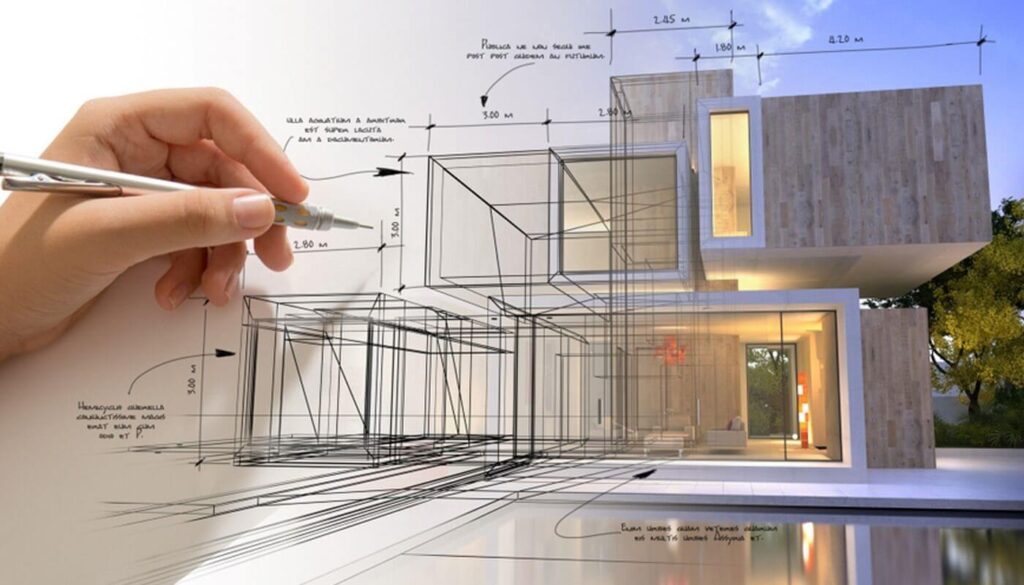The Necessary Duty of an Engineer fit Lasting Urban Settings for Future Generations
The role of a designer in crafting lasting city settings is increasingly pivotal in reacting to the challenges of climate change and urbanization. By perfectly incorporating ecological concepts right into their styles, engineers not only enhance the visual and useful quality of urban rooms however also address pushing concerns such as energy performance and social equity. Their know-how in innovative materials and community engagement shapes developments that resonate with neighborhood values and aspirations. As we check out the complexities of this area further, it becomes evident that the future of urban living may pivot on the very practices architects employ today.
Comprehending Lasting Urban Style
Sustainable city style incorporates eco-friendly concepts with city preparation to develop environments that are not only comfortable however likewise resilient. This approach stresses the relevance of incorporating all-natural systems into the metropolitan material, making certain that advancement fulfills the requirements of the here and now without jeopardizing the capacity of future generations to fulfill their own demands. Crucial element of lasting city style consist of reliable land use, the promotion of biodiversity, and the assimilation of eco-friendly areas, all of which add to improved lifestyle for locals.
Furthermore, lasting urban style focuses on the reduction of the metropolitan warmth island result, improved air high quality, and effective stormwater management. It encourages the usage of renewable energies and energy-efficient structure techniques, which dramatically reduced carbon footprints. Moreover, lasting metropolitan style fosters social equity by creating available public areas and advertising mixed-use advancements that deal with diverse populations.
Via thoughtful planning and innovative layout strategies, sustainable city settings can improve area resilience versus climate change while promoting financial growth. This all natural method not only addresses prompt metropolitan challenges yet also prepares for much healthier, more lasting cities for generations ahead.
Key Obligations of Designers
Architects play a crucial duty in shaping lasting city atmospheres by equating style concepts right into substantial frameworks and rooms. Their obligations incorporate a variety of tasks that contribute to the overall success of city layout jobs.
Primarily, architects conduct complete site evaluations to comprehend the ecological, social, and cultural context of their tasks. This foundational understanding notifies their layout decisions, guaranteeing that structures integrate with their environments. They also participate in collaborative processes with stakeholders, including city planners, designers, and the community, fostering an inclusive method to metropolitan advancement.
Additionally, architects are tasked with developing styles that optimize power performance, source preservation, and performance. They must comply with neighborhood zoning legislations, constructing codes, and sustainability certifications, ensuring compliance while pressing the limits of advancement.

Ingenious Materials and Techniques
In the pursuit of ecologically accountable style, ingenious products and methods have become important elements in the creation of sustainable urban environments. Engineers are increasingly using materials that reduce ecological effect while improving power performance. As an example, recycled materials, such as redeemed wood and repurposed metals, not just minimize waste check over here yet likewise add one-of-a-kind visual high qualities to frameworks.
In this page addition, advancements in modern technology have resulted in the advancement of high-performance materials, such as shielded concrete kinds (ICFs) and photovoltaic or pv glass, which add to energy conservation and harness renewable resource. Techniques such as easy solar style and environment-friendly roofs further exemplify how design can integrate with natural systems, lowering dependence on synthetic heating & cooling.
Additionally, the assimilation of clever materials, which adapt to ecological changes, provides encouraging opportunities for improving building efficiency - cda architects. These products can react to temperature level fluctuations or moisture levels, maximizing convenience and sustainability
Inevitably, the tactical selection and application of innovative products and techniques encourage architects to create metropolitan areas that are not only practical and cosmetically pleasing yet additionally resistant and ecologically responsible, making sure a lasting future for generations to come.
Area Involvement and Collaboration
The success of innovative materials and methods in lasting urban design is substantially improved by energetic community interaction and collaboration. Designers have to identify that the constructed atmosphere profoundly impacts the lives of regional homeowners, making it crucial to include them in the layout process. Involving the community cultivates a sense of possession and accountability, guaranteeing that developments not only meet aesthetic and functional requirements yet also mirror the values and desires of those that occupy them.

Successful neighborhood interaction also assists in focusing on social equity within metropolitan advancement. By taking into consideration the voices of marginalized populaces, architects can produce rooms that are inclusive and equitable. In this means, community engagement and collaboration come to be integral to achieving genuinely sustainable metropolitan settings that offer the demands of existing and future generations.
Future Patterns in Lasting Architecture

Additionally, improvements in innovation are forming future patterns in sustainable style. The assimilation of wise products and building systems enables for real-time power management, enhancing performance and minimizing carbon impacts. Advancements such as eco-friendly roofing systems, living wall surfaces, and energy-generating facades are becoming common techniques, even more promoting environmental balance within metropolitan environments.
Furthermore, a change in the direction of biophilic design is acquiring traction, highlighting the connection in between nature and human health. By integrating natural environments, architects create spaces that foster mental health while promoting biodiversity.
Conclusion
Finally, designers are critical beforehand sustainable metropolitan environments through their knowledge in design, innovative materials, and area interaction. By focusing on power efficiency and resource conservation, these experts add to the development of resilient city rooms that meet the needs of present and future generations - cda architects. The assimilation of eco-friendly principles not just improves livability however additionally promotes social equity, guaranteeing advancements resonate with the values and desires of the neighborhoods they offer